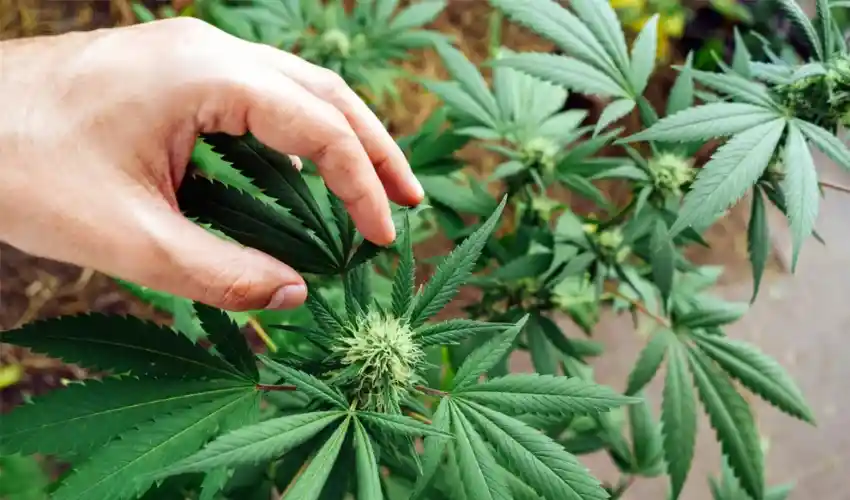
The Impact of Climate on CBD Flower Strains
The cultivation of CBD (cannabidiol) flower strains, which are prized for their therapeutic properties, is profoundly influenced by climatic conditions. From temperature to humidity, light cycles to soil quality, various climate factors play a crucial role in determining the quality, potency, and yield of CBD flower strains. Understanding these influences is essential for growers aiming to produce high-quality CBD flowers consistently.
Temperature and Its Effects
Temperature is a critical factor in the growth cycle of CBD Flower strains. Optimal temperatures for growing CBD hemp typically range between 70°F to 85°F (21°C to 29°C). Consistent exposure to these temperatures allows for healthy growth and robust flower development. Temperatures below this range can slow growth and make plants more susceptible to diseases. Conversely, temperatures above this range can cause heat stress, leading to wilting, stunted growth, and a reduction in CBD potency.
Different CBD strains have varying tolerances to temperature. Indica-dominant strains, for example, generally thrive in slightly cooler climates, whereas Sativa-dominant strains prefer warmer conditions. Hybrid strains are often bred to be more adaptable to a broader range of temperatures, offering growers some flexibility in different climatic conditions.
Humidity and Moisture Management
Humidity levels play a significant role in the health and development of CBD flowers. During the vegetative stage, higher humidity (around 60-70%) is beneficial, promoting vigorous leaf and stem growth. However, as the plant transitions to the flowering stage, lower humidity (around 40-50%) is preferred. Lower humidity during flowering helps prevent mold and mildew, which can devastate crops and significantly reduce yield and quality.
Excessive moisture can lead to problems such as bud rot and powdery mildew, especially in regions with high rainfall or inadequate air circulation. Growers in such climates must employ strategies like proper spacing, ventilation, and sometimes even dehumidifiers to maintain optimal moisture levels.
Light Cycles and Photoperiodism
The amount and intensity of light a CBD plant receives directly impact its growth and flowering cycles. CBD hemp plants are photoperiodic, meaning they flower in response to changes in the light cycle. In natural settings, this means they begin to flower as days shorten towards the end of the growing season.
Regions with longer daylight hours can support a more extended vegetative period, leading to larger plants and potentially higher yields. However, indoor growers can manipulate light cycles to optimize flowering times, regardless of the external climate. By controlling light exposure, they can induce flowering at will, ensuring multiple harvests per year.
Soil Quality and Nutrient Availability
Climate also affects soil quality, which in turn impacts CBD Flower UK cultivation. Different climates lead to variations in soil composition, pH levels, and nutrient availability. For instance, soils in arid regions tend to be more alkaline and may require amendments to balance pH levels and provide adequate nutrients. Conversely, soils in tropical climates are often more acidic and may require lime to raise the pH.
Organic matter content, often higher in temperate climates, improves soil structure and water retention, benefiting CBD plants. In contrast, sandy soils in dry climates may require more frequent watering and fertilization. Growers must tailor their soil management practices to their specific climatic conditions to ensure optimal plant health and CBD production.
Adapting to Climate Challenges
Climate change poses new challenges for CBD flower cultivation, as shifts in temperature and precipitation patterns can disrupt traditional growing cycles. Unpredictable weather events, such as unseasonal frosts or prolonged droughts, require growers to adopt more resilient practices. This includes selecting climate-adapted strains, using greenhouse technologies, and employing sustainable water management practices.
Greenhouses and indoor growing facilities offer controlled environments where temperature, humidity, and light cycles can be precisely regulated. These setups, although more costly, provide a buffer against climate variability, ensuring consistent production and quality.
Conclusion
The interplay between climate and CBD flower strains is complex and multifaceted. Successful cultivation hinges on understanding and adapting to the specific climatic conditions of the growing region. By optimizing temperature, humidity, light cycles, and soil quality, growers can enhance the quality and yield of their CBD flowers. As climate change continues to introduce new variables, the ability to adapt and innovate in response to these challenges will be crucial for the sustainability and success of CBD flower cultivation.
